|
|
|

|
|||||

|
|

Industrial and commercial distributor Global Industrial (NYSE:GIC) fell short of the market’s revenue expectations in Q3 CY2025 as sales rose 3.3% year on year to $353.6 million. Its GAAP profit of $0.48 per share was 14.3% below analysts’ consensus estimates.
Is now the time to buy Global Industrial? Find out by accessing our full research report, it’s free for active Edge members.
Formerly known as Systemax, Global Industrial (NYSE:GIC) distributes industrial and commercial products to businesses and institutions.
Reviewing a company’s long-term sales performance reveals insights into its quality. Any business can put up a good quarter or two, but the best consistently grow over the long haul. Regrettably, Global Industrial’s sales grew at a mediocre 6.5% compounded annual growth rate over the last five years. This was below our standard for the industrials sector and is a poor baseline for our analysis.
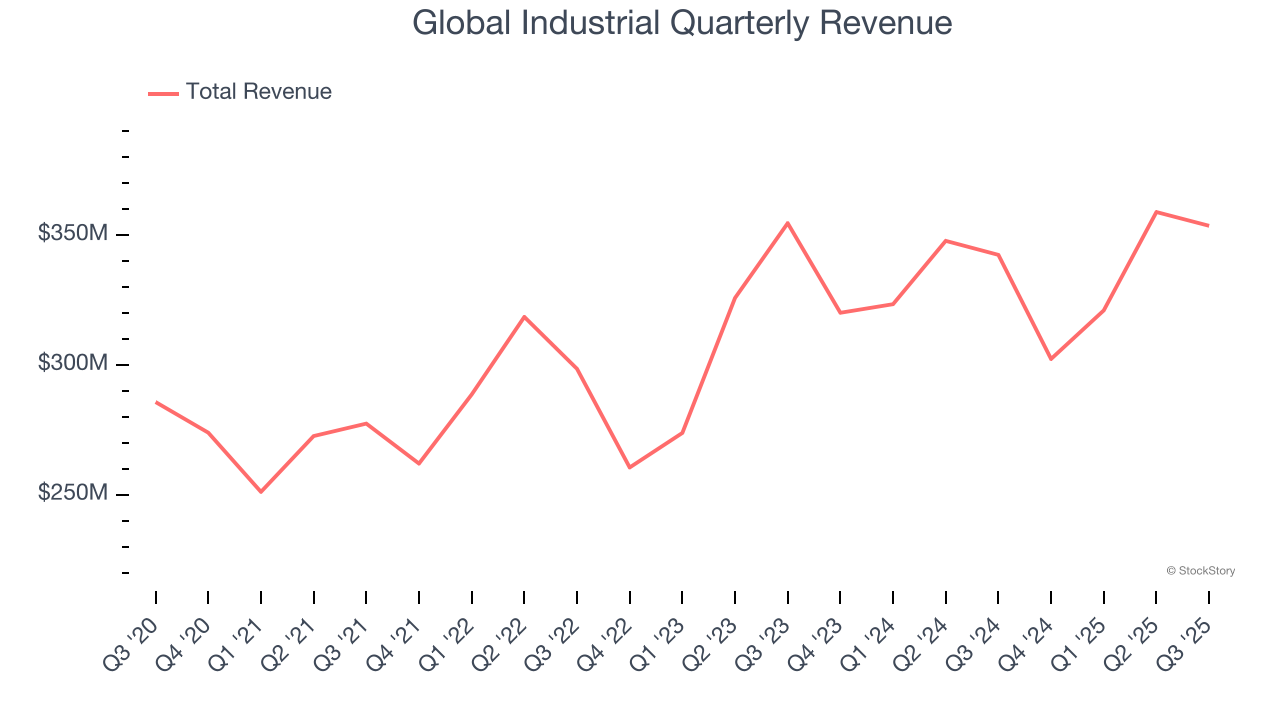
Long-term growth is the most important, but within industrials, a half-decade historical view may miss new industry trends or demand cycles. Global Industrial’s recent performance shows its demand has slowed as its annualized revenue growth of 4.9% over the last two years was below its five-year trend.
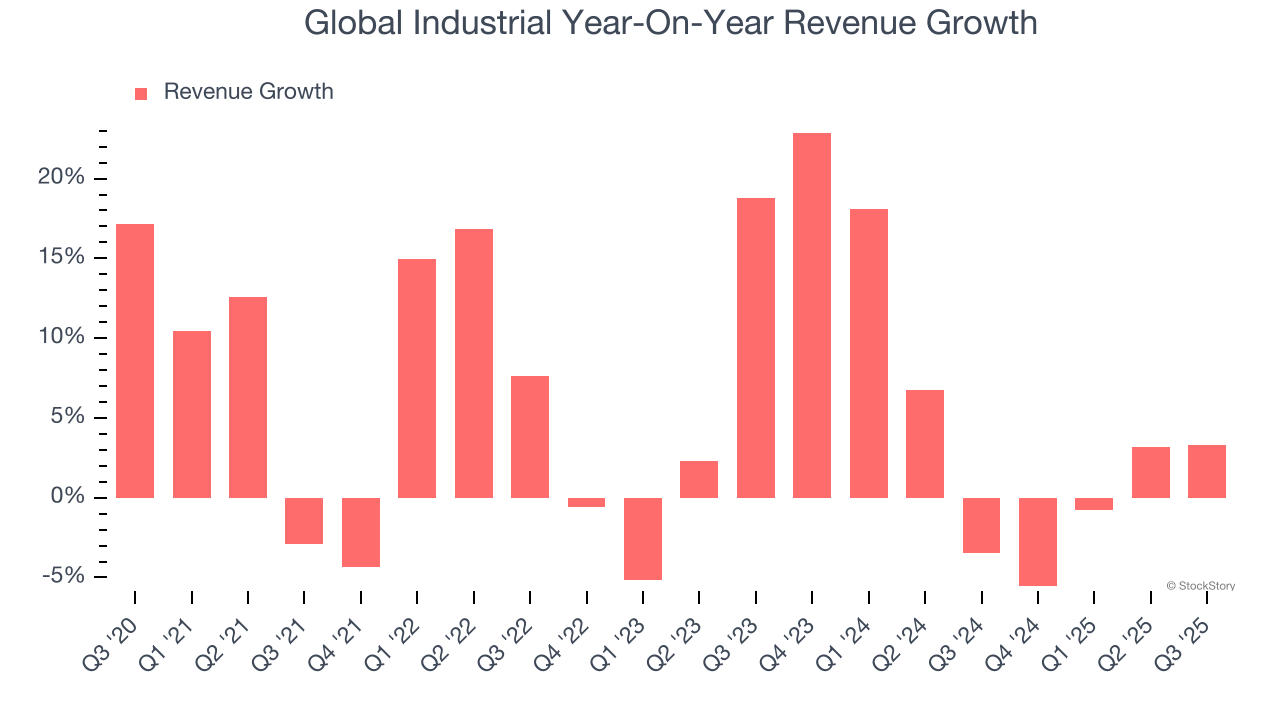
This quarter, Global Industrial’s revenue grew by 3.3% year on year to $353.6 million, falling short of Wall Street’s estimates.
Looking ahead, sell-side analysts expect revenue to grow 5.8% over the next 12 months, similar to its two-year rate. This projection is underwhelming and suggests its newer products and services will not accelerate its top-line performance yet.
Today’s young investors won’t have read the timeless lessons in Gorilla Game: Picking Winners In High Technology because it was written more than 20 years ago when Microsoft and Apple were first establishing their supremacy. But if we apply the same principles, then enterprise software stocks leveraging their own generative AI capabilities may well be the Gorillas of the future. So, in that spirit, we are excited to present our Special Free Report on a profitable, fast-growing enterprise software stock that is already riding the automation wave and looking to catch the generative AI next.
Operating margin is a key measure of profitability. Think of it as net income - the bottom line - excluding the impact of taxes and interest on debt, which are less connected to business fundamentals.
Global Industrial’s operating margin might fluctuated slightly over the last 12 months but has remained more or less the same, averaging 7.7% over the last five years. This profitability was mediocre for an industrials business and caused by its suboptimal cost structure.
Analyzing the trend in its profitability, Global Industrial’s operating margin might fluctuated slightly but has generally stayed the same over the last five years. This raises questions about the company’s expense base because its revenue growth should have given it leverage on its fixed costs, resulting in better economies of scale and profitability.
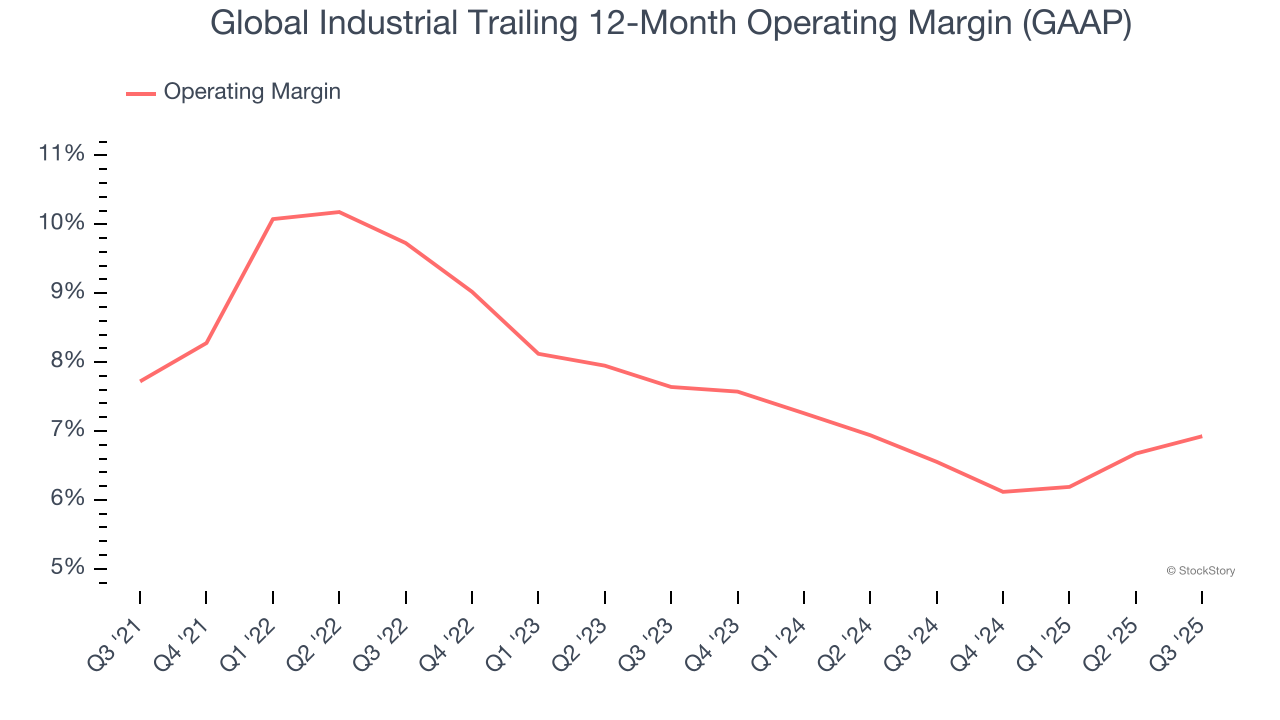
In Q3, Global Industrial generated an operating margin profit margin of 7.4%, in line with the same quarter last year. This indicates the company’s cost structure has recently been stable.
We track the long-term change in earnings per share (EPS) for the same reason as long-term revenue growth. Compared to revenue, however, EPS highlights whether a company’s growth is profitable.
Global Industrial’s EPS grew at a weak 1.9% compounded annual growth rate over the last five years, lower than its 6.5% annualized revenue growth. However, its operating margin didn’t change during this time, telling us that non-fundamental factors such as interest and taxes affected its ultimate earnings.
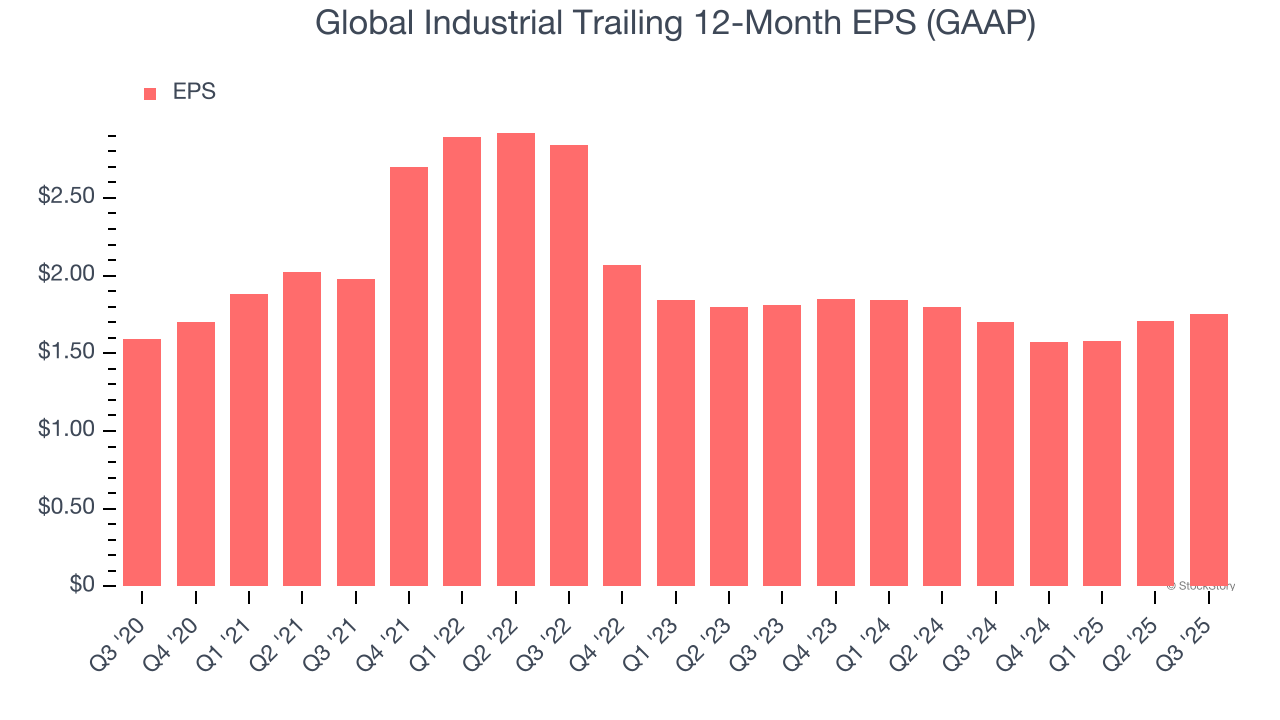
We can take a deeper look into Global Industrial’s earnings to better understand the drivers of its performance. A five-year view shows Global Industrial has diluted its shareholders, growing its share count by 2.4%. This has led to lower per share earnings. Taxes and interest expenses can also affect EPS but don’t tell us as much about a company’s fundamentals.
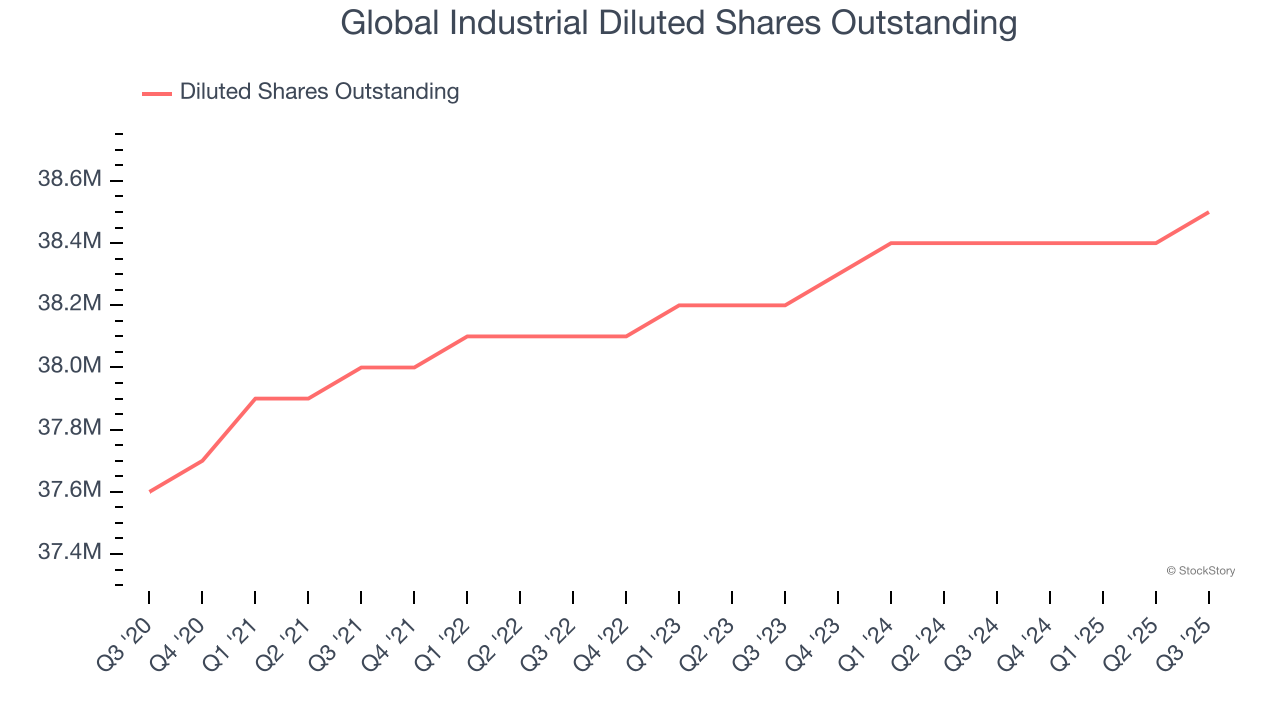
Like with revenue, we analyze EPS over a more recent period because it can provide insight into an emerging theme or development for the business.
For Global Industrial, its two-year annual EPS declines of 1.7% show it’s continued to underperform. These results were bad no matter how you slice the data.
In Q3, Global Industrial reported EPS of $0.48, up from $0.44 in the same quarter last year. Despite growing year on year, this print missed analysts’ estimates. Over the next 12 months, Wall Street expects Global Industrial’s full-year EPS of $1.75 to grow 16.6%.
We enjoyed seeing Global Industrial beat analysts’ EBITDA expectations this quarter. On the other hand, its revenue and EPS fell short of Wall Street’s estimates. Overall, this quarter could have been better. The stock traded down 14.6% to $30 immediately following the results.
The latest quarter from Global Industrial’s wasn’t that good. One earnings report doesn’t define a company’s quality, though, so let’s explore whether the stock is a buy at the current price. If you’re making that decision, you should consider the bigger picture of valuation, business qualities, as well as the latest earnings. We cover that in our actionable full research report which you can read here, it’s free for active Edge members.
| Dec-03 | |
| Nov-24 | |
| Nov-17 | |
| Nov-06 | |
| Oct-30 | |
| Oct-29 | |
| Oct-29 | |
| Oct-29 | |
| Oct-28 | |
| Oct-28 | |
| Oct-28 | |
| Oct-28 | |
| Oct-27 | |
| Oct-26 | |
| Oct-20 |
Join thousands of traders who make more informed decisions with our premium features. Real-time quotes, advanced visualizations, backtesting, and much more.
Learn more about FINVIZ*Elite